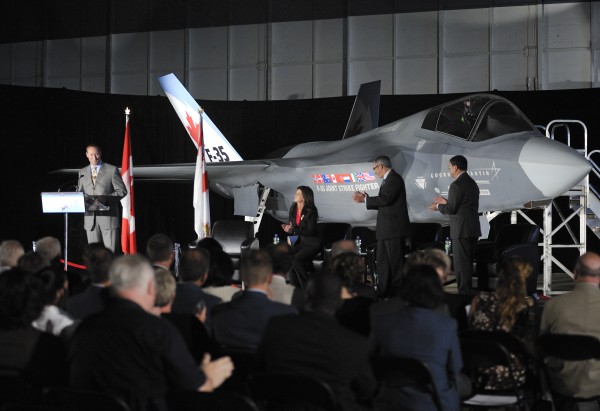The next generation of Canadian fighter jets is scheduled to begin arriving in 2016.
Canada will be purchasing 65 F-35 Lightning II jets, better known as the Joint Strike Fighter (JSF), from Lockheed Martin to replace Canada’s aging fleet of CF-18 Hornet’s, which are expected to be put out of service by 2020.
“The F-35 Joint Strike Fighter is the best aircraft we can provide our men and women in uniform to face and defeat the challenges of the 21st century,” said Peter MacKay, Canada’s Minister of National Defence. “This multi-role stealth fighter will help the Canadian Forces defend the sovereignty of Canadian airspace, remain a strong and reliable partner in the defence of North America, and provide Canada with an effective and modern capability for international operations.”
The deal will cost Canada $9 billion, which roughly translates into little more than $138 million per jet. Critics have been quick to point out that the price tag does not include maintenance, which many believe will push the overall expenditure to $16 billion.
Still, the economic benefits are promising.
“Canadian companies will have direct involvement in the design of equipment in the short term, while also setting in motion opportunities for decades to come,” explained Industry Minister Tony Clement.
It has been estimated that the Canadian economy has seen a doubling of its original investment of $168 million, as Canadian companies, researchers and universities have all benefited from contracts issued. With the purchase of 65 jets, Canadian companies are looking at huge contracts.
Canadian companies Pratt & Whitney Canada, along with Firebird Technologies and NGRAIN (Canada) Corp have all been instrumental in the production so far, winning competitive bids with the American military. In addition to the production of the jet itself, Canadian companies should see economic benefits associated with those additional maintenance costs.
Due to the high costs associated with producing such an advanced fighter, guaranteeing a large production run helps reduce the price. With that in mind the Joint Strike Fighter program was entered into by nine countries, eight of which are NATO members; Australia, Canada, Denmark, Italy, the Netherlands, Norway, Turkey, the United Kingdom and the United States.
Though it had been known for some time that Canada was looking to replace the CF-18, it was not clear whether the F-22 Raptor might fill that role.
While it is a more expensive fifth-generation fighter aircraft than the JSF, the Raptor is widely considered to be far superior. Its stealth capabilities outmatch the F-35, as does the speed capabilities. The Raptor, unlike the F-35, is capable of a supercruise, which is supersonic flight without the use of afterburners. This is better for both stealth capabilities and endurance.
One area where the F-35 outmatches the Raptor is in payload. The JSF is capable of carrying double the internal payload weight. As well, many of the F-22s systems have been used and improved to fill the F-35.
By Sean Palter
Sources: Wings Magazine, CBC, GlobalSecurity.Org, the Department of National Defence
*Disclaimer: The opinions expressed in this article are solely of the author’s, and do not represent those of The Atlantic Council of Canada.

